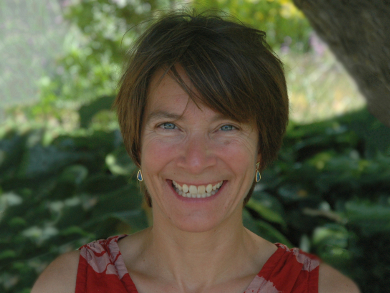Dr. Ruben Ragg, Managing Editor of ChemBioChem, talks to Professor Katrina Forest, University of Wisconsin-Madison, Madison, USA, about her recent article on β-amino acid substitutions in proteins.
Professor Forest, could you please explain your findings described in the article?
Natural proteins are made in cells from a set of 20 amino acid building blocks. Chemists and biologists have learned an enormous amount about the three-dimensional structures and properties of these molecules and are now emboldened to apply this knowledge to designing molecules which are assembled from building blocks that differ slightly from natural amino acids. These new protein-like structures have properties such as resistance to cellular degradation pathways while retaining native-like structures and interactions. This gives them the potential to be used in medical and industrial applications.
The ability to predict the structures of the designed molecules requires that we map out the rules of structure for the non-natural amino acids, as has been done over the past 75 years for the natural amino acids. To date, this work has focused largely on the incorporation of non-natural amino acids within well-defined α-helical protein secondary structures.
With our article, we have added important information on the behavior of two classes of non-natural amino acids within the β-turn secondary structure (pictured). We provide principles for the incorporation of these subunits while maintaining structure and stability of the template protein.
.jpg)
What has led you to study β-amino acid replacements in proteins in the first place?
The University of Wisconsin-Madison has a collaborative and open spirit of scientific investigation. This study is part of a body of work that Professor Sam Gellman and I have pursued together over nearly ten years. We began the collaboration because of the natural overlap between Sam’s interests in designing protein-like molecules with predictable structures and novel properties and my group’s success in determining structures of molecules that were too big to be attacked by standard small molecule crystallography methods, yet too small or too bespoke to be considered classic protein crystallography targets.
Which part of the project proved the most challenging?
While we can systematically synthesize peptide libraries and measure thermodynamic parameters of all the members, we cannot always control whether they will crystallize. Our search for racemic crystallization has provided many otherwise unattainable crystals, but we still do not have three-dimensional structures for all of the potential β-amino acid replacements in our library.
What did you enjoy most?
One of the parts of this study I enjoyed the most was revisiting seminal papers from Professor Janet Thornton’s group at the European Molecular Biology Laboratory (EMBL) in Heidelberg, Germany, and from the American Dr. Isabella Karle and colleagues. I really appreciate how great their contributions to our understanding of secondary structures in peptides and proteins were. They predicted things we are able to observe now in our β-amino-acid-containing loops.
Do you have any plans for future work extending from this study?
Absolutely. We will continue to learn how non-natural amino acids can be used to design stable protein and protein-like structures with predictable three-dimensional geometries.
In light of the upcoming International Women’s Day, do you have any advice for young women pursuing an academic career in STEM?
Do not be concerned if your path to an academic position does not follow directly from A→B→C. The winding and adventurous routes may provide you with knowledge, experiences, and problem-solving skills that are useful in the future. There are countless fascinating journeys that have brought successful scientists to their goals, and these include degrees in seemingly unrelated fields along the way.
Secondly, there are now many supportive mentoring programs for young women in science and in academia. Do not be shy about taking advantage of these.
The article they talked about
- Evaluation of β-Amino Acid Replacements in Protein Loops: Effects on Conformational Stability and Structure,
David E. Mortenson, Dale F. Kreitler, Nicole C. Thomas, Ilia A. Guzei, Samuel H. Gellman, Katrina T. Forest,
ChemBioChem 2018.
https://doi.org/10.1002/cbic.201700580



